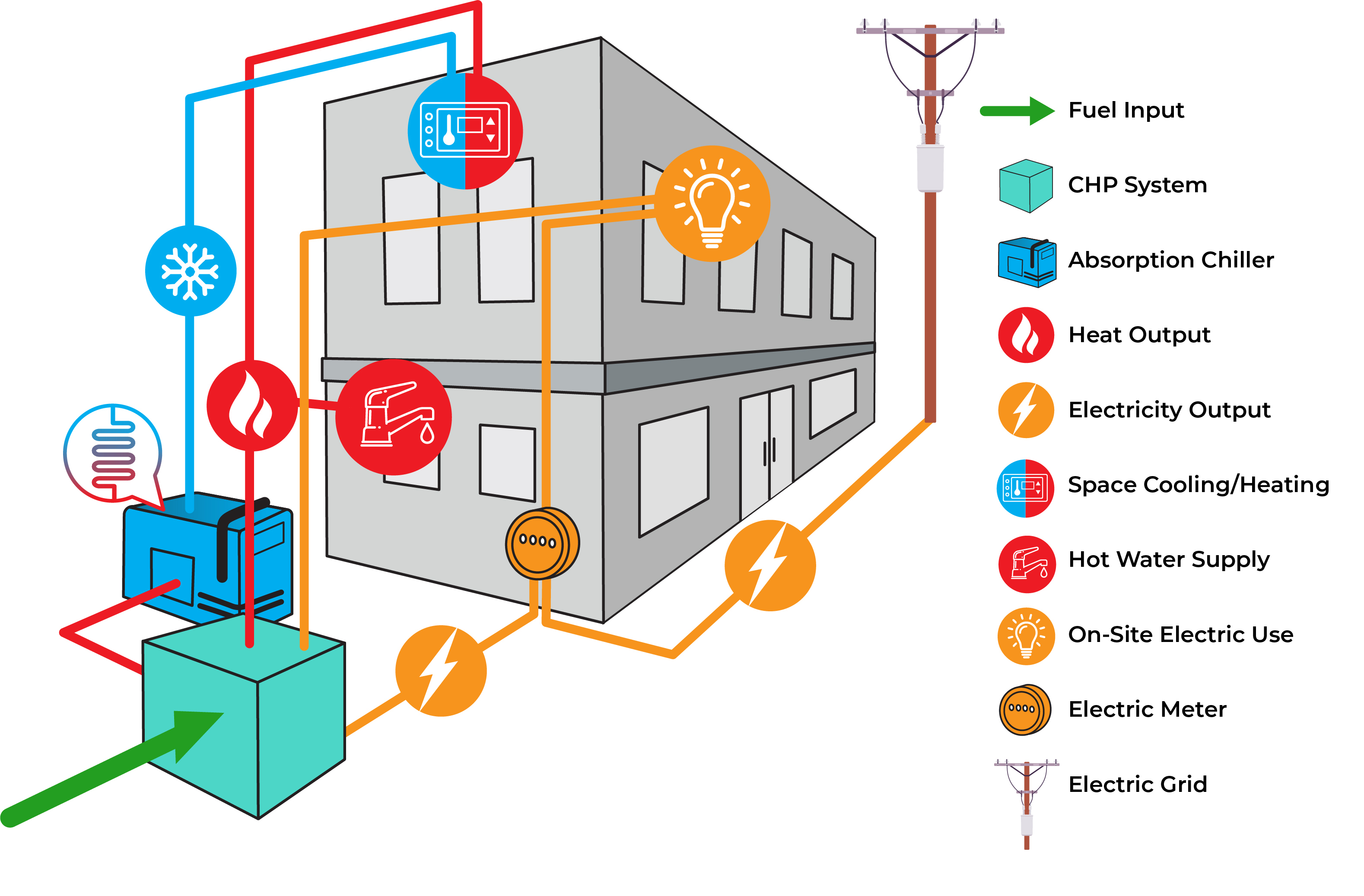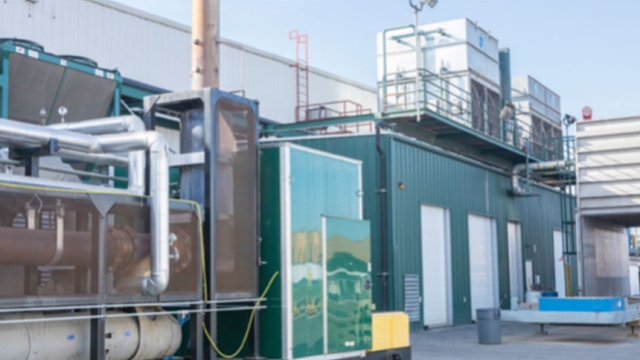Combined Heat and Power (CHP) Technologies
CHP are technologies that generate electricity and capture the heat that would otherwise be wasted to provide useful thermal energy—such as steam or hot water—that can be used for space heating, cooling, domestic hot water, and industrial processes.

How is CHP powered?
In California, a CHP system can be powered from natural gas, renewable natural gas, biogas and/or hydrogen in technologies such as engines, turbines, microturbines, or even fuel cells. A CHP system could be comprised of an internal-combustion engine generator, a micro-turbine, a gas turbine, a steam turbine, a fuel cell and heat recovery equipment.
How does a CHP unit generate electricity and heat?
These systems simply capture and utilize excess heat generated during the production of electric power. CHP systems offer economic, environmental, and reliability-related advantages as compared to conventional power generation facilities that produce only electricity. Distributed power generation systems, which are frequently located near thermal loads, are particularly well suited for CHP applications.
What is the benefit of CHP?
- Increased energy efficiency
- Reduced air emissions
- Enhanced grid reliability and resilience
- Reduced energy and infrastructure costs
What are the applications of CHP?
- Commercial buildings - office buildings, hotels, health clubs, nursing homes
- Residential - condominiums, co-ops, apartments, planned communities
- Institutions - colleges and universities, hospitals, prisons, military bases
- Municipal—district energy systems, wastewater treatment facilities, K-12 schools
- Manufacturers—chemical, refining, ethanol, pulp and paper, food processing, glass manufacturing.
What is MicroCHP?
MicroCHP is an extension of the idea of traditional CHP to the smaller customer sector range, in the range up to 50 kW. The difference between MicroCHP and CHP is the scale of the system, as traditional CHP systems are typically larger.
Waste Heat to Power – (Organic Rankin Cycle, PRT)
This technology refers to capturing waste heat and then turning it into electricity. This process involves two steps, including using the waste heat from other applications to create mechanical energy and then driving an electric generator.
Linear Generator
This technology uses a low-temperature reaction of air and fuel to drive magnets, known as oscillators, through copper coils to efficiently produce electricity in a linear motion.

Power to Gas
This technology uses excess renewable electricity to produce hydrogen via water electrolysis. The hydrogen is captured and can be mixed with natural gas and stored in the natural gas pipeline system. This hydrogen can be used directly as a final energy carrier or converted to electricity or other forms. This technology offers a solution to long-term energy storage.
Battery Storage
This technology uses lithium-ion batteries to enable renewables to be stored and then released when the power is needed.
Solar Photovoltaic
This technology converts sun light into electricity using semiconducting materials that exhibit the photovoltaic effect.

